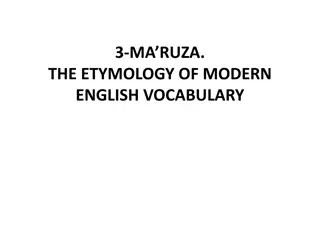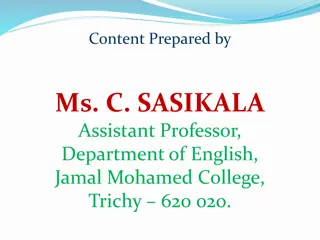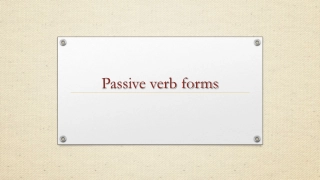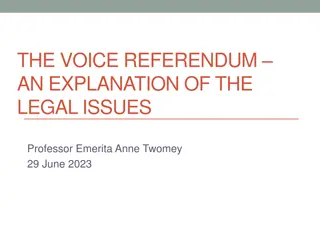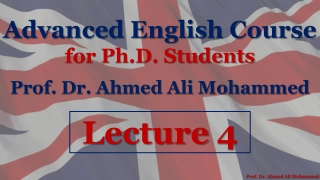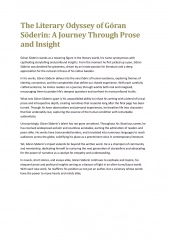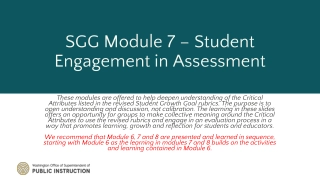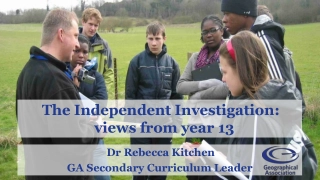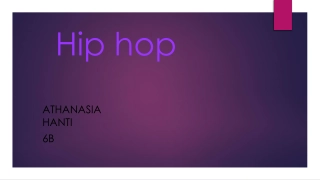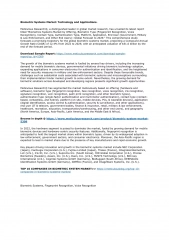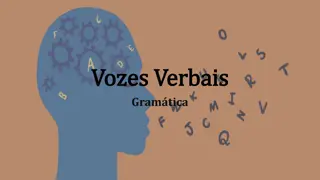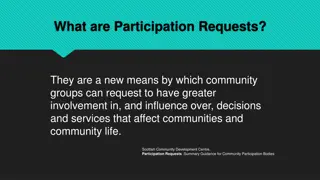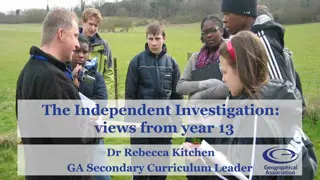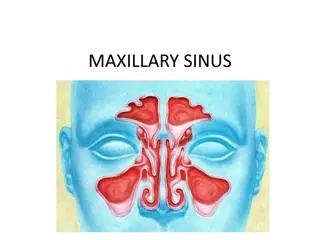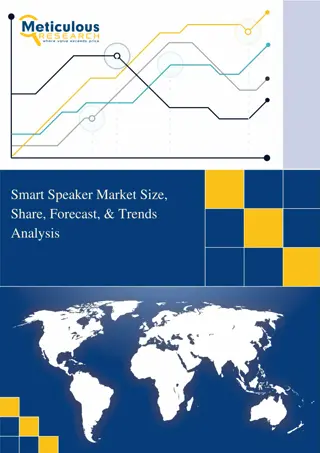Is regressive voice assimilation a mirage?
Delve into the discussion on regressive voice assimilation, challenging traditional views of laryngeal phonology. Explore the intricate phonetic cues and contrasts that go beyond Voice Onset Time (VOT), examining the complexities of active [-voice] in voicing languages. Discover the prevalence of regressive voicing in VCCV sequences across various languages, including Polish and Hungarian.
Is regressive voice assimilation a mirage?
PowerPoint presentation about 'Is regressive voice assimilation a mirage?'. This presentation describes the topic on Delve into the discussion on regressive voice assimilation, challenging traditional views of laryngeal phonology. Explore the intricate phonetic cues and contrasts that go beyond Voice Onset Time (VOT), examining the complexities of active [-voice] in voicing languages. Discover the prevalence of regressive voicing in VCCV sequences across various languages, including Polish and Hungarian.. Download this presentation absolutely free.
Presentation Transcript
Is regressive voice assimilation a mirage? Geoff Schwartz (geoff@amu.edu.pl) Adam Mickiewicz University, Pozna APAP 2023, Lublin 1
Outline Introduction Background on two-series laryngeal phonology A phonetic study of voice assimilation in Polish It isn t really what the textbooks tell us it is Implications If [voice] doesn t spread, what s the alternative? 2
Two-series laryngeal systems Older tradition using binary features [+voice] for /b, d, g, etc./ [-voice] for /p, t, k, etc./ The unary approach laryngeal realism (LR) Three phonetic possibilities for stops Long VOT, short VOT, negative VOT Two types of laryngeal system, two unary features True-voice languages use [voice] (or element |L|) Aspiration languages use [spread glottis] (or |H|) 3
Familiar arguments for LR Transparent approach to phonetics-phonology link if short VOT is the default, it should be unmarked, voiced and aspirated should be marked, depending on system Typology Short VOT the most common category, should be unmarked Descriptive elegance and empirical coverage Easily extendable to three-way and four-way systems [voice] may spread only in voicing languages Binary approaches miss out on all this, but . . . . 4
Problems with LR Transparent approach to phonetics-phonology link works ONLY with VOT, but laryngeal contrasts are phonetically much more complex than just VOT Other phonetic cues, including F1 transitions and f0, show evidence for active [-voice] in voicing languages Typology: Vaux & Samuels (2005) cast doubt on markedness of aspiration Assimilation Active [-voice] in true-voicing languages (e.g. Rubach 1996) [voice] may spread only in voicing languages, but is spreading really what happens??? 5
Regressive voice assimilation In VCCV sequences in which C2 is voiced, C1 also becomes voiced We deal here primarily with regressive voicing, not devoicing Interestingly, progressive voicing is quite rare, progressive assimilation is usually devoicing Attested in Slavic, including Polish, as well as Hungarian, and Dutch, and other languages Polish liczba /lit +ba/ [lid ba] number Hungarian /ku:t + b n/ [ku:db n] in a well 6
Regressive voice assimilation A textbook-style representation of regressive voicing is shown below a feature [voice] spreads from C1 to C2 here I present phonetic data on this phenomenon in Polish, which will show something very different from spreading 7
Methods Participants 51 L1 Polish speakers, 33F, 18M; age range Minimal use of languages other than English Materials A set of carefully constructed Polish sentences used in a project on the effects of prosodic structure on segmental phonetics Eight two-word sequences selected from these sentences, containing the context for regressive voicing or devoicing Few word-internal cases of regressive voicing 408 total clusters from 51 speakers Procedure sentences elicited using Powerpoint; speakers familiarized themselves with them before recording8
Methods (cont.) Acoustic analysis Two tiers of annotation in Praat Surpalaryngeal tier Intervals denoting C1 and C2 durations Voicing tier Portion of C1 and C2 in which voicing is observed Three different types of realization were observed Standard Unreleased C1 Intrusive vowel interrupting cluster 9
Methods (cont.) Standard realization: zbyt d ugo 10
Methods (cont.) Unreleased realization: zbyt d ugo 11
Methods (cont.) Intrusive vowel interrupting cluster: zbyt d ugo 12
Methods (cont.) Acoustic measures: I was interested in the relative time course of voicing over the entire cluster, i.e. C1 and C2 Most previous studies focus only on C1, looking for information on whether contrast is neutralized Neutralization was not the focus here Durational measures extracted using a Praat script Duration of C1 and C2 Duration of voicing in C1 and C2 Proportion of voicing in C1 and C2 13
Methods (cont.) Dependent variables for statistical analyses Calculated on the basis of acoustic measures 1 sample t-tests performed in SPSS C1 Voicing/C2 voicing Is there more voicing in C1 relative to C2? values over 1 show C1 more voiced than C2 C1 voicing midpoint What is time course of voicing in C1? does it really spread from C1? Values under 0.5 indicate first part of C1 is more voiced 0.5 of course means the whole thing is voiced 14
Results C1/C2 voicing Regressive voicing contexts More C1 voicing in all realizations, except for intrusive vowels 15
Results C1 voicing midpoint Regressive voicing contexts Full C1 voicing in about 66% of items (midpoint = 0.5) All other items were left-voiced (midpoint < 0.5) 16
Results C1 voicing midpoint Both voicing and devoicing contexts Note some left-voicing even in devoicing contexts 17
Results summary Regressive voicing in Polish is a phonetic process, by which voicing bleeds (Davidson 2016) off of the preceding vowel into C1 of the cluster Therefore, there is more voicing in the left half of C1 C1 tends to show more voicing than C2 Is regressive voicing in Polish is a phonological process? If so, we have to claim that phonetic and phonological voicing move in opposite directions Phonetic voicing: left to right; Phonological voicing: right to left I am not comfortable making such a claim But phonology still has to explain why voicing occurs in some languages but not others 18
An alternative explanation We will use the Onset Prominence representational framework A model of phonological representation will show how a phonetic process such like regressive voicing in Polish is actually not phonological The model helps us to identify the boundary between phonetics and phonology 19
The OP framework Onset Prominence representations 20
The OP framework Two-series laryngeal systems in OP 21
Voice assimilation without [voice] atba adba: nothing blocks voicing bleed into closure of C1 adpa atpa: C2 [fortis] specification truncates voicing bleed 22
Voice assimilation without [voice] Polish: voicing bleeds into closure of C1 English: C1 Closure-level [fortis] prevents bleed OP shows why you get phonetic effect in Polish but not English 23
Phonological or phonetic? In the following examples, would you say C1 is voiced? gdy zby[t d] ugo j ujemy 24
Phonological or phonetic? In the examples, would you say C1 is voiced? gdy zby[t d] ugo j ujemy My ears and informants say NO, but the acoustics . . . 25
The irrelevance of phonetics ;) Actual voicing in Polish obstruents plays a smaller role in the perception of the laryngeal contrast than is usually assumed Keating 1980, Schwartz & Arndt 2018, Schwartz et al. 2019 In other words, it s a phonetic effect. It s not phonological OP helps us determine the boundaries between phonology and phonetics 26
Is regressive voice assimilation a mirage? Phonologically, it s not real Phonetically, it most certainly is not regressive The facts described here are compatible with an approach to two-series systems that does not use a feature [voice], even in true-voicing languages cf. Blaho (2009), Iosad (2012), Cyran (2014), van der Hulst (2015) instead there s a single [fortis] feature Tune in tomorrow for more phonetic evidence that [voice] is not phonological . . . 27
Thanks for listening Please email me for references: geoff@amu.edu.pl Or find me on Research Gate or Google Scholar Acknowledgements: The Polish National Science Centre (NCN), as well as Adam Olender, Daria Arndt, Ewelina Wojtkowiak, Gienek Cyran, Jerzy Dzierla, and Kamil Ka mierski 28




